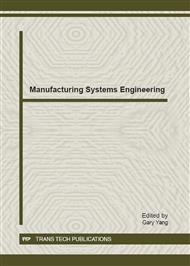p.287
p.292
p.298
p.303
p.308
p.313
p.318
p.324
p.329
The Technology of Line-Spectrum Enhancement Based on Image Processing
Abstract:
Time-frequency spectrogram analysis is a basic method in passive radar and sonar. It′s necessary to enhance the line-spectrum to improve the performance in low SNR(Signal to Noise Ratio) and strong interference presented that wider detecting range and long reacting time can be obtained. The traditional line-spectrum enhancing technology based on signal′s coherence can′t work well in very low SNR, and the performance will drop sharply when the line-spectrums are close in frequencies or the number of line-spectrums increases. A new method which combines image processing with signal processing is brought out to overcome these defects. It can work well when the SNR in frequency domain is close to 0dB,which is much lower than ALE and other traditional technology. The results derived from simulation and trial data analysis show that it′s stable and can be applied in the field with line-spectrums.
Info:
Periodical:
Pages:
308-312
Citation:
Online since:
January 2012
Authors:
Price:
Сopyright:
© 2012 Trans Tech Publications Ltd. All Rights Reserved
Share:
Citation:


